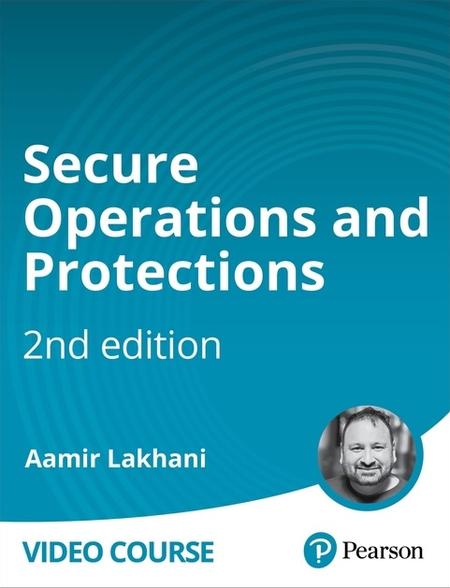
English | MP4 | AVC 1280×720 | AAC 44KHz 2ch | 45 Lessons (4h 35m) | 1.25 GB
Gain an introductory understanding of secure operations and protections concepts.
Understanding how to keep data operations secure and protect data is a critical part of any organizations day-to-day business. With over 4 hours of video training, the Secure Operations and Protections, 2nd Edition video course explores organizations’ strategies, practices, and technologies to protect their systems, networks, and data, ultimately enhancing their overall security posture. Dive into the essential aspects of secure operations, including network security, system hardening, and incident response planning.
Throughout the video course, expert trainer, author and cybersecurity expert Aamir Lakhani uses hands-on demos, in-depth discussions and lightboard work to teach cyber security fundamentals. This video course teaches you cybersecurity best practices in a way that is easy to access and implement in real world situations.
Topics include:
- System and Network Architecture Concepts
- Efficiency and Process Improvement
- Recommended Controls to Mitigate Attacks and Software Vulnerabilities
- Analyzing Data to Prioritize Vulnerabilities
Learn How To:
- Protect data and secure an organizations operation in their day-to-day business
- Observe, collect, and secure date
- Detect common security encounters and be prepared for them
- Implement processes that allow communication of information in a correct and timely manner
Table of Contents
Introduction
1 Secure Operations and Protections Introduction
Lesson 1 Importance of System and Network Architecture Concepts in Security Operations
2 Learning objectives
3 Log ingestion Part 1
4 Log ingestion Part 2
5 Operating system (OS) concepts
6 Infrastructure concepts
7 Network architecture
8 Identity and access management
9 Encryption
10 Sensitive data protection
Lesson 2 Importance of Efficiency and Process Improvement in Security Operations
11 Learning objectives
12 Standardize processes
13 Streamline operations
14 Technology and tool integration
Lesson 3 Recommend Controls to Mitigate Attacks and Software Vulnerabilities
15 Learning objectives
16 Cross-site scripting
17 Overflow vulnerabilities
18 Data poisoning
19 Broken access control
20 Cryptographic failures
21 Injection flaws
22 Cross-site request forgery
23 Directory traversal
24 Insecure design
25 Security misconfiguration
26 End-of-life or outdated components
27 Identification and authentication failures
28 Server-side request forgery
29 Remote code execution
30 Privilege escalation
31 Local file inclusion (LFI)remote file inclusion (RFI)
Lesson 4 Analyze Data to Prioritize Vulnerabilities
32 Learning objectives
33 Compensating controls
34 Control types
35 Patching and configuration management
36 Maintenance windows
37 Exceptions
38 Risk management principles
39 Policies, governance, and service-level objectives (SLOs)
40 Prioritization and escalation
41 Attack surface management
42 Secure coding best practices
43 Secure software development life cycle (SDLC)
44 Threat modeling
Summary
45 Secure Operations and Protections Summary
Resolve the captcha to access the links!